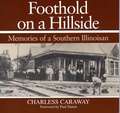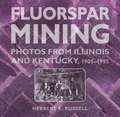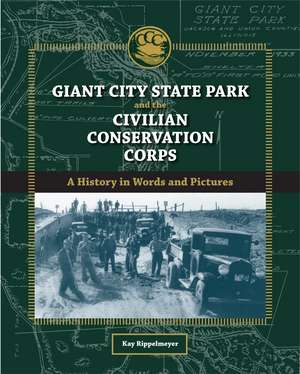Giant City State Park and the Civilian Conservation Corps: A History in Words and Pictures: Shawnee Books
Autor Kay Rippelmeyeren Limba Engleză Paperback – 2 mar 2010
Many recognize Giant City State Park as one of the premier recreation spots in southern Illinois, with its unspoiled forests, glorious rock formations, and famous sandstone lodge. But few know the park’s history or are aware of the remarkable men who struggled to build it. Giant City State Park and the Civilian Conservation Corps: A History in Words and Pictures provides the first in-depth portrait of the park’s creation, drawing on rarely seen photos, local and national archival research, and interviews to present an intriguing chapter in Illinois history.
Kay Rippelmeyer traces the geological history of the park, exploring the circumstances that led to the breathtaking scenery for which Giant City is so well known, and providing insightful background on and cultural history of the area surrounding the park. Rippelmeyer then outlines the effects of the Great Depression and the New Deal on southern Illinois, including relief efforts by the Civilian Conservation Corps, which began setting up camps at Giant City in 1933. The men of the CCC, most of them natives of southern and central Illinois, are brought to life through vividly detailed, descriptive prose and hundreds of black-and-white photographs that lavishly illustrate life in the two camps at the park. This fascinating book not only documents the men’s hard work—from the clearing of the first roads and building of stone bridges, park shelters, cabins, and hiking and bridle trails, to quarry work and the raising of the lodge’s famous columns—it also reveals the more personal side of life in the two camps at the park, covering topics ranging from education, sports, and recreation, to camp newspapers, and even misbehavior and discipline.
Supplementing the photographs and narrative are engaging conversations with alumni and family members of the CCC, which give readers a rich oral history of life at Giant City in the 1930s. The book is further enhanced by maps, rosters of enrollees and officers, and a list of CCC camps in southern Illinois. The culmination of three decades of research, Giant City State Park and the Civilian Conservation Corps provides the most intimate history ever of the park and its people, honoring one of Illinois’s most unforgettable places and the men who built it.
Kay Rippelmeyer traces the geological history of the park, exploring the circumstances that led to the breathtaking scenery for which Giant City is so well known, and providing insightful background on and cultural history of the area surrounding the park. Rippelmeyer then outlines the effects of the Great Depression and the New Deal on southern Illinois, including relief efforts by the Civilian Conservation Corps, which began setting up camps at Giant City in 1933. The men of the CCC, most of them natives of southern and central Illinois, are brought to life through vividly detailed, descriptive prose and hundreds of black-and-white photographs that lavishly illustrate life in the two camps at the park. This fascinating book not only documents the men’s hard work—from the clearing of the first roads and building of stone bridges, park shelters, cabins, and hiking and bridle trails, to quarry work and the raising of the lodge’s famous columns—it also reveals the more personal side of life in the two camps at the park, covering topics ranging from education, sports, and recreation, to camp newspapers, and even misbehavior and discipline.
Supplementing the photographs and narrative are engaging conversations with alumni and family members of the CCC, which give readers a rich oral history of life at Giant City in the 1930s. The book is further enhanced by maps, rosters of enrollees and officers, and a list of CCC camps in southern Illinois. The culmination of three decades of research, Giant City State Park and the Civilian Conservation Corps provides the most intimate history ever of the park and its people, honoring one of Illinois’s most unforgettable places and the men who built it.
Din seria Shawnee Books
-
 Preț: 156.57 lei
Preț: 156.57 lei - 23%
 Preț: 119.18 lei
Preț: 119.18 lei - 20%
 Preț: 152.33 lei
Preț: 152.33 lei -
 Preț: 107.63 lei
Preț: 107.63 lei -
 Preț: 82.07 lei
Preț: 82.07 lei -
 Preț: 112.78 lei
Preț: 112.78 lei - 25%
 Preț: 199.91 lei
Preț: 199.91 lei - 17%
 Preț: 335.44 lei
Preț: 335.44 lei - 28%
 Preț: 148.50 lei
Preț: 148.50 lei -
 Preț: 107.00 lei
Preț: 107.00 lei - 21%
 Preț: 185.21 lei
Preț: 185.21 lei - 21%
 Preț: 257.71 lei
Preț: 257.71 lei - 15%
 Preț: 367.79 lei
Preț: 367.79 lei -
 Preț: 181.23 lei
Preț: 181.23 lei -
 Preț: 248.58 lei
Preț: 248.58 lei -
 Preț: 266.62 lei
Preț: 266.62 lei -
 Preț: 258.86 lei
Preț: 258.86 lei -
 Preț: 222.98 lei
Preț: 222.98 lei
Preț: 139.40 lei
Nou
Puncte Express: 209
Preț estimativ în valută:
26.67€ • 27.92$ • 22.20£
26.67€ • 27.92$ • 22.20£
Carte indisponibilă temporar
Doresc să fiu notificat când acest titlu va fi disponibil:
Se trimite...
Preluare comenzi: 021 569.72.76
Specificații
ISBN-13: 9780809329229
ISBN-10: 0809329220
Pagini: 232
Ilustrații: 191
Dimensiuni: 203 x 254 x 20 mm
Greutate: 0.46 kg
Editura: Southern Illinois University Press
Colecția Southern Illinois University Press
Seria Shawnee Books
ISBN-10: 0809329220
Pagini: 232
Ilustrații: 191
Dimensiuni: 203 x 254 x 20 mm
Greutate: 0.46 kg
Editura: Southern Illinois University Press
Colecția Southern Illinois University Press
Seria Shawnee Books
Notă biografică
Kay Rippelmeyer, a southern Illinois native,is newly retired from her work as a lecturer, researcher, and academic advisor in the College of Liberal Arts at Southern Illinois University Carbondale. A program liaison for the Illinois Humanities Council, she has researched southern Illinois history for more than thirty years and has lectured widely on the Civilian Conservation Corps and river work in the region. She is currently completing work on her next book, The Shawnee National Forest and the Civilian Conservation Corps.
Recenzii
“Giant City State Park and the Civilian Conservation Corps provides new insight into a significant part of our national history. Kay Rippelmeyer understands the difficult conditions of the 1930s and imparts that understanding to her readers.”—David Kenney, coauthor of Death Underground:The Centralia and West Frankfort Mine Disasters
“Kay Rippelmeyer’s account of the history of southern Illinois and especially the effects of the Great Depression on the area is fascinating. . . . This book shows how resourceful a nation can be when times get hard.”—Jenny Skufca, Illinois Nature Preserves Commission
“Kay Rippelmeyer’s account of the history of southern Illinois and especially the effects of the Great Depression on the area is fascinating. . . . This book shows how resourceful a nation can be when times get hard.”—Jenny Skufca, Illinois Nature Preserves Commission
